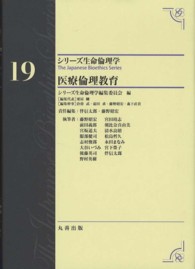Full Description
Essential insights and strategies for teaching and researching second language listening comprehension skills
The Handbook of Second Language Listening provides comprehensive and authoritative coverage of the processes, challenges, and pedagogy of second language (L2) listening. Designed for researchers, teacher educators, and classroom practitioners, this volume presents a systematic examination of how L2 learners perceive and interpret spoken language across diverse contexts and discusses how instruction can better support the listening process.
The Handbook addresses a broad range of topics essential to understanding and teaching L2 listening, including perceptual foundations, the influence of prosody, speech perception, listening assessment, and metacognitive strategy use. Chapters by leading scholars and emerging voices in applied linguistics bridge theory and practice by offering evidence-based insights into listener variability, instructional design, and the interface between listening and pronunciation. This book brings attention to topic areas often overlooked, such as decolonial theory in listening research and the impact of orthography on perception. Equipping educators and scholars with the tools needed to understand L2 listening as both a cognitive process and a teachable skill, the Handbook of Second Language Listening:
Integrates current findings from phonetics, psycholinguistics, and applied linguistics
Connects theoretical models of perception and processing with classroom-based applications
Addresses foundational and emerging topics, from phonetic decoding comprehension of spoken academic discourse
Includes dedicated sections on technology-enhanced assessment and instruction
Covers key pedagogical challenges such as listening in noise, processing of prosody, and strategy instruction
Provides practical frameworks for evaluating and designing L2 listening tasks
The Handbook of Second Language Listening is ideal for graduate-level courses in TESOL and Applied Linguistics, including Second Language Acquisition, Listening Pedagogy, and Language Assessment, which are core to MA TESOL and Linguistics programs. It is also a critical reference for researchers, teacher educators, curriculum designers, and language assessment specialists.
Contents
Foreword: (Suzanne Graham) A. L1 and L2 Listening
1. L2 Listening: How perception, strategies, technology, and assessment have reshaped the field (John Levis)
2. Perceptual foundations of second language phonetic learning (Alexis K. Black, Gayatri Choudhary & Thalia Hernandez-DePaoli)
3. The challenges of L2 spoken word recognition (Mirjam Broersma)
4. Historical trends in teaching listening (Michael Rost)
5. Decolonial theory and L2 listening (Mark R. Emerick & Dylan Ashton)
6. Professional training for teaching listening: Abiding issues and guiding principles in an era of evolving pedagogies (Marnie Reed)
B. Perception
7. Speech perception in a second language (Sadi Phillips & Isabelle Darcy)
8. Modeling L2 perception (Arkadiusz Rojczyk & Yanping Li)
9. Processing second/foreign-language prosody (Annie Tremblay)
10. Prosody and L2 listening (Chie Nakamura & Suzanne Flynn)
11. Orthography and L2 perception (Robert Cavaluzzi, Christoforos Souganidis, Antje Stoehr)
12. What do the stimuli in high variability phonetic training (HVPT) tell us about second language perception?: Current findings, implications, and the way forward (Janice Wing Sze Wong)
C. Research and Assessment for L2 Listening
13. The assessment of L2 listening: Models, constructs, performance factors, and item types (Gary Ockey & Erika Latham)
14. Technology in listening assessment (Ruslan Suvorov & Pelin Irgin)
15. Listeners' self-assessment of second language speech (Ingrid Mora-Plaza & Mireia Ortega Duran)
16. Methodological options in researching L2 listening (Yunhua Shen & Lawrence Jun Zhang)
D. Basic Approaches and Concepts
17. Approaches to L2 listening instruction (Michael Yeldham)
18. Bottom-up and top-down listening (Tamara Jones)
19. Metacognitive strategies in L2 listening (Mohammadreza Dalman)
20. Strategy instruction for teaching L2 listening skills in language classrooms (Phung Dao, Zehui Yang, Mai Xuan Nhat Chi Nguyen)
21. Individual differences in L2 perception (Solène Inceoglu)
E. Technology Supported L2 Listening
22. Out-of-class listening: Multiple channels and modes for FL learning and teaching (Art Tsang)
23. Computer-based second language listening (Mónica S. Cárdenas-Claros)
24. Visual input and second language listening (Daniel R. Isbell & Jieun Kim)
25. Towards listening 4.0: Technology-based instruction, research, and assessment (Di Liu)
F. Practical Considerations
26. Listening in task-based language teaching (Natsuko Shintani & Aki Tsunemoto)
27. A 4-step approach for listening to authentic speech (Alice Henderson)
28. Understanding academic talks: Does a focus on prosody help? (Veronica G. Sardegna & Anna Jarosz
29. Vocabulary and L2 listening (Takumi Uchihara)
30. Second language listening and connected speech (Nathaniel Carney)
31. Second language listening processes and Pedagogy: Implications for teaching young learners (Kiren Kaur & Christine C. M. Goh)







